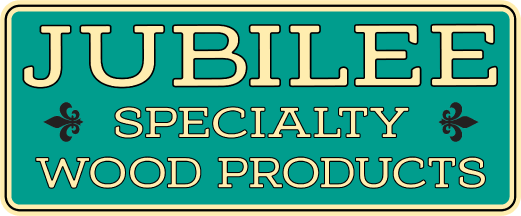New to Woodworking? Start Here.
We aim to educate our customers, so we filled our website with sample pictures of (almost) every species, definitions of lumber terminology, and general FAQs. We hope our customers leave with a better understanding of our selection and feel inspired to be begin their next woodworking project.
How to Calculate Board Footage
Board footage is a measure of volume. One board foot is 1” thick by 12” wide by 12” long. To calculate board footage, simply multiply thickness (in inches) by width (in inches rounded to nearest inch) by length (in feet rounded to nearest foot). Take the number produced and divide it by 12. That number is how many board feet that are contained in the board. *It’s also advised to get 10-15% more than you think you’ll need to account for waste.
Example 1:
One board that is 1”x8”x10′
1 x 8 = 8
8 x 10 = 80
80 / 12 = 6.666 board feet rounded to 7 board feet.*
Example 2:
One board that is 2”x8”x10′
2 x 8 = 16
16 x 10 = 160
160 / 12 = 13.333 board feet rounded to 13 board feet.*
Lumber Terminology
Thickness
The thickness of lumber is measured in increments of 1/4 inch. See the following:
4/4: 1 inch
5/4: 1.25 inches
6/4: 1.5 inches
8/4: 2 inches
10/4: 2.5 inches
12/4: 3 inches
16/4: 4 inches
Grades
FAS: this stands for “First and Second”. It is the most common grade for domestic species. This grade allows for very few defects so it is considered high quality.
#1 Common and #2 Common: this grade allows for more defects than FAS and requires additional manufacturing to produce clear cuttings.
Other Terms
Quartersawn (QTR): a method of cutting that produces straight grain patterns and normally increases stability.
S1S (Surfaced 1 Side): surfacing one face of the board.
S2S (Surfaced 2 Sides): surfacing both faces of the board.
S3S (Surfaced 3 Sides): surfacing both faces of the board and ripping one edge.
S4S (Surfaced 4 Sides): surfacing both faces of the board and ripping both edges.
Ambrosia: most common in soft maple, this grade refers to a type of visible fungus left by beetles that bore in the live wood. The kiln-drying process removes all the beetles from the wood but leaves the unique ambrosia pattern.
Curly: caused by internal pressure usually found under a branch or knot, this gives the lumber a beautiful wavy look.
Pecky: refers to long divots or holes found in cypress produced by a fungus while the tree is alive.
Rustic: a proprietary grade used in retail sales that refers to natural characteristics still being present such as tight knots and color variation.
Green Lumber: lumber that has recently been cut and has not been dried so it still has a high moisture content.
Air-Drying: the process that naturally removes a majority of moisture from fresh cut lumber by leaving it exposed to the open air for an extended period of time. This is the first step in processing lumber.
Kiln-Drying: the process that removes moisture from air-dried wood. This process is the second step in drying lumber and mitigates moisture related problems such as warping and twisting.
